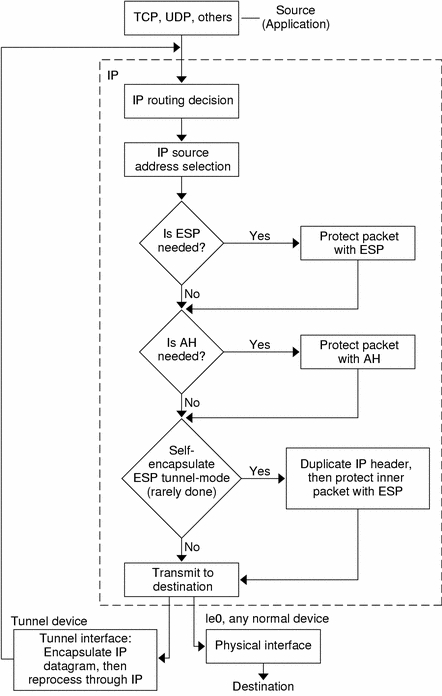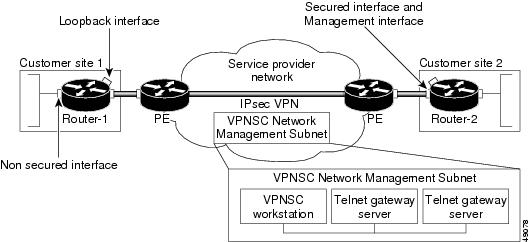Featured
Table of Contents
Difference Between Ipsec And Ssl
For a full technical description of IPsec works, we suggest the exceptional breakdown on Network, Lessons. There are that figure out how IPsec customizes IP packages: Web Key Exchange (IKE) establishes the SA in between the communicating hosts, working out the cryptographic keys and algorithms that will be used in the course of the session.
The host that receives the packet can use this hash to make sure that the payload hasn't been modified in transit. Encapsulating Security Payload (ESP) encrypts the payload. It likewise adds a sequence number to the packet header so that the receiving host can be sure it isn't getting duplicate packages.
At any rate, both procedures are developed into IP executions. The file encryption developed by IKE and ESP does much of the work we expect out of an IPsec VPN. You'll discover that we've been a little unclear about how the encryption works here; that's because IKE and IPsec permit a wide variety of encryption suites and innovations to be utilized, which is why IPsec has handled to survive over more than 20 years of advances in this location.

There are 2 various methods which IPsec can run, described as modes: Tunnel Mode and Transport Mode. The difference between the two refer to how IPsec deals with packet headers. In Transportation Mode, IPsec secures (or verifies, if just AH is being utilized) just the payload of the package, but leaves the existing package header information more or less as is.
Ipsec Configuration - Win32 Apps
When would you use the various modes? If a network packet has actually been sent out from or is destined for a host on a personal network, that packet's header includes routing data about those networksand hackers can evaluate that information and utilize it for dubious purposes. Tunnel Mode, which secures that details, is usually used for connections in between the gateways that sit at the outer edges of personal business networks.
Once it shows up at the entrance, it's decrypted and gotten rid of from the encapsulating packet, and sent out along its way to the target host on the internal network. The header information about the topography of the personal networks is hence never ever exposed while the packet traverses the public internet. Transport mode, on the other hand, is normally used for workstation-to-gateway and direct host-to-host connections.
On the other hand, due to the fact that it utilizes TLS, an SSL VPN is secured at the transportation layer, not the network layer, so that might affect your view of how much it boosts the security of your connection. Where for more information: Copyright 2021 IDG Communications, Inc.
Simply put, an IPsec VPN (Virtual Private Network) is a VPN working on the IPsec protocol. There's more to it. In this short article, we'll discuss what IPsec, IPsec tunneling, and IPsec VPNs are. All of it is provided in a simple yet in-depth fashion that we hope you'll delight in.
Ipsec Overview
IPsec stands for Web Protocol Security. The IP part tells the data where to go, and the sec secures and verifies it. In other words, IPsec is a group of protocols that set up a secure and encrypted connection in between gadgets over the public web. IPsec protocols are normally grouped by their tasks: Asking what it is made from is comparable to asking how it works.
Each of those three different groups takes care of different distinct tasks. Security Authentication Header (AH) it makes sure that all the data comes from the exact same origin which hackers aren't trying to pass off their own little bits of data as legitimate. Imagine you get an envelope with a seal.

This is however one of 2 ways IPsec can run. Encapsulating Security Payload (ESP) it's an encryption protocol, indicating that the information package is changed into an unreadable mess.
On your end, the encryption happens on the VPN client, while the VPN server takes care of it on the other. Security Association (SA) is a set of specs that are agreed upon between 2 devices that develop an IPsec connection. The Internet Key Exchange (IKE) or the key management protocol belongs to those specs.
Ssl Vpn And Ipsec Vpn: How They Work


IPsec Transportation Mode: this mode secures the information you're sending but not the info on where it's going. While harmful actors couldn't read your intercepted communications, they could inform when and where they were sent out. IPsec Tunnel Mode: tunneling creates a secure, enclosed connection in between two devices by utilizing the usual internet.
A VPN utilizes protocols to encrypt the connection, and there is more than one method to do so. Using IPsec is one of them. A VPN using an IPsec protocol suite is called an IPsec VPN. Let's say you have an IPsec VPN customer running. How does it all work? You click Connect; An IPsec connection starts utilizing ESP and Tunnel Mode; The SA establishes the security criteria, like the kind of encryption that'll be used; Information is ready to be sent out and gotten while encrypted.
MSS, or optimum segment size, refers to a worth of the optimum size a data packet can be (which is 1460 bytes). MTU, the optimum transmission system, on the other hand, is the worth of the maximum size any device connected to the internet can accept (which is 1500 bytes).
And if you're not a Surfshark user, why not turn into one? We have more than just IPsec to provide you! Your personal privacy is your own with Surfshark More than just a VPN (Web Secret Exchange version 2) is a protocol used in the Security Association part of the IPsec procedure suite.
Ipsec Vpn
Cybersecurity Ventures expects worldwide cybercrime costs to grow by 15 percent per year over the next five years, reaching $10. 5 trillion USD every year by 2025, up from $3 trillion USD in 2015. And, cyber attacks are not limited to the economic sector - federal government firms have actually suffered substantial information breaches also.

Some might have IT programs that are out-of-date or in need of security spots. And still others just may not have a sufficiently robust IT security program to defend versus increasingly sophisticated cyber attacks.
As displayed in the illustration listed below, Go, Quiet protects the connection to enterprise networks in an IPSec tunnel within the business firewall. This enables a completely safe and secure connection so that users can access business programs, missions, and resources and send, store and recover details behind the safeguarded firewall without the possibility of the connection being intercepted or pirated.
Internet Procedure Security (IPSec) is a suite of protocols usually utilized by VPNs to produce a protected connection over the internet. The IPSec suite offers functions such as tunneling and cryptography for security functions. This is why VPNs primarily utilize IPSec to create safe tunnels. IPSec VPN is also extensively referred to as 'VPN over IPSec.' IPSec is generally executed on the IP layer of a network.
Latest Posts
The Best Business Vpn Services 2023
Best Vpn Solution For Your Business
Vpn Stopped Working: Here Are 4 Quick Tips To Get It Back